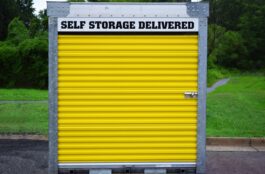A small water leak might create a lot of damage to your property, and it usually stays undetected till it’s far too late, at which point it’s too late, and you’ll need to pay for costly fixings. Ceilings, carpets, and walls can be expensive to restore. You’d be surprised to realize that even small fixings can cost thousands of dollars.
Things to Check to Prevent Water Damage
As a homeowner, you must always know how to keep your property safe from water damage. We’ll show you how to prevent water damage in a few easy steps:
1. Check your toilets.
Look for any water that shouldn’t be there on the flooring. Remove the tank’s top and make sure that the float is adjusted to the correct level (typically indicated by the letters WL on the inside). So it is not overflowing into the overflow pipe. Usually, all it takes is a small adjustment. Leak detection and repair can save you a lot of time and money. Learn more about water damage restoration here.
2. Check your plumbing system.
Check your plumbing, particularly your water pipes, both inside and outside your home. Check the area around your sinks, basins, and cabinets. Check under your sink for puddles or leaks from your pipes; also, plug your sinks and fill them up, then remove the plug and look for leaks below. If there is any water under, try to find the source of the leak; it could be a simple dripping tap or a leaking waste that is easily fixed.
3. Check your hot water cylinder.
Look for leaks, wet patches on the floor, and even little jets of water as you check the valve work. Also, make sure the water isn’t pouring out of the air vent on low-pressure open vented hot water cylinders.
4. Water valves.
Most importantly, make sure that you and your family know where to shut off the water in an emergency. Knowing where your water shutoff valve is located can save you thousands of dollars over time. There will usually be a shutoff valve in the front of your property (usually on the Council verge) with a blue lid to identify it if you have reticulated water (community supply). Furthermore, a water pump and the water tank shutoff valve must be turned off on the house with a non-reticulated water supply (your water comes from storage tanks).
5. Check your roofing.
Check your roof and spout outside of your home for any problems. Regularly clear out all leaves from your spouting, as blocked spouting, especially internal gutters, can cause major water damage to your ceilings. Furthermore, check roof penetrations such as chimneys and flues, particularly flashings.
Loose nails or screws, damaged flashings, or perhaps gaps under flashings are all indications of roof problems. Look for wet patches on your ceiling as well. Roof leaks, even little ones, can rapidly cause severe ceiling and structural damage. Tek screws can replace loose nails, and Plumbers Roofing Silicone can be used to reseal flashings. Visit this property restoration company to find out more about water damage.
Conclusion
You should remember that it is better to be safe than sorry. If you notice any indication of a water leak anywhere, despite how small it appears to be, have it fixed right away or repair it yourself. You may put it off and forget about it, and then the small leak turns into a huge flood when you’re off shopping or on vacation.


